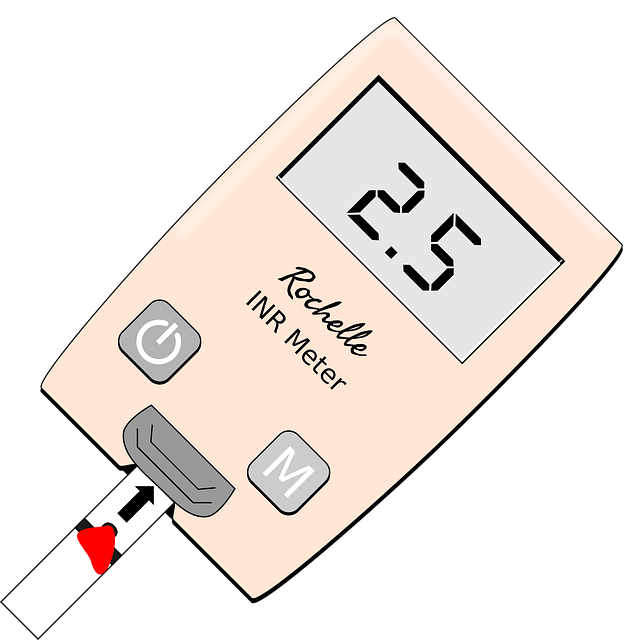The UK Diabetes Blood Test includes ferritin level checking as a vital component for diagnosing and managing iron-deficiency anaemia, a common diabetes complication. Ferritin, known as the 'iron storehouse', regulates iron levels and supports haemoglobin production. Monitoring ferritin (typical reference range: 12-150 mcg/L) helps healthcare professionals guide dietary adjustments or supplementation to improve iron status and overall health outcomes for diabetics, ensuring early intervention and better glycemic control.
“Unraveling the mysteries of ferritin, a protein that stores iron in our bodies, is crucial for understanding iron deficiency. This article explores why the UK Diabetes Blood Test includes ferritin level checking as a vital component of healthcare screening. We’ll delve into ‘Understanding Ferritin: The Key to Iron Health’, dissect ‘Why UK Diabetes Blood Test Includes Ferritin Level Checking’, and guide you through ‘Interpreting Results’ to help navigate normal and anemic ranges. Stay informed about this essential health indicator.”
- Understanding Ferritin: The Key to Iron Health
- Why UK Diabetes Blood Test Includes Ferritin Level Checking
- Interpreting Results: Navigating Normal and Anemic Ranges
Understanding Ferritin: The Key to Iron Health
Ferritin is a protein that plays a crucial role in storing and regulating iron levels in the body. Often referred to as the ‘iron storehouse’, ferritin ensures an adequate supply of this essential mineral for various physiological functions, particularly haemoglobin production and energy metabolism. Understanding ferritin levels is vital for maintaining optimal health, especially among individuals at risk of iron deficiency, such as those with UK Diabetes Blood Test results indicating anaemia or low iron reserves.
In the context of UK Diabetes Blood Test protocols, monitoring ferritin levels can help in diagnosing and managing iron-deficiency anaemia, a common complication associated with diabetes. By assessing ferritin, healthcare professionals can gain valuable insights into an individual’s overall iron status, enabling them to make informed decisions regarding supplementation or dietary adjustments to alleviate iron deficiency and promote better health outcomes.
Why UK Diabetes Blood Test Includes Ferritin Level Checking
In the context of the UK Diabetes Blood Test, ferritin level checking is a crucial component due to its significance in diagnosing and managing iron deficiency, a common issue among diabetics. Ferritin, a protein that stores iron in the body, plays a vital role in maintaining optimal health for individuals with diabetes. By including ferritin level testing, healthcare professionals can gain valuable insights into a patient’s overall iron status, which is essential as diabetes can lead to altered iron metabolism.
This additional check ensures that any potential iron deficiency is identified early on, enabling prompt intervention and management. Given the high prevalence of both diabetes and iron-deficiency anemia, the UK Diabetes Blood Test incorporates ferritin level assessment to offer comprehensive care, enhance patient outcomes, and promote better glycemic control.
Interpreting Results: Navigating Normal and Anemic Ranges
When it comes to interpreting ferritin level results, understanding normal and anemic ranges is crucial. In the UK, a typical reference range for ferritin levels is approximately 12-150 micrograms per litre (mcg/L) for adults, with slight variations depending on gender and age. This range represents the optimal level of stored iron in the body, ensuring efficient utilisation.
If your ferritin level falls below 30 mcg/L, it may indicate iron deficiency or anaemia. This is particularly relevant for individuals with diabetes in the UK, as they are at a higher risk of developing iron-deficiency anaemia due to chronic inflammation and blood loss. In such cases, healthcare professionals may recommend further testing and interventions to raise ferritin levels and address any underlying causes.
Ferritin level testing plays a vital role in the UK Diabetes Blood Test, helping to identify iron deficiency anemia. By understanding ferritin as the body’s iron storehouse, we can interpret results effectively, with normal ranges indicating adequate iron levels and anemia ranges signaling a need for further investigation. This simple yet powerful tool enables healthcare professionals to promptly address iron deficiencies, ensuring optimal health for those with diabetes.
